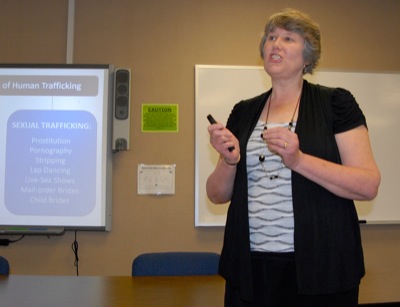Wednesday, April 30th, 2014
Winter hard on Ohio's honey bees
By Nancy Allen
Ohio's harsh winter decimated the honey bee population throughout the state and may result in higher prices for some fruits and vegetables.
Preliminary observations indicate Ohio beekeepers may have lost 50 to 80 percent of their honey bees, said Reed Johnson, an entomology professor at The Ohio State University.
Ohio producers rely on bees to pollinate more than 70 crops, including apples, strawberries and pumpkins. The USDA says honey bees pollinate more than $14 billion in crops nationwide each year.
"They are very important to pollinating Ohio fruit trees, especially apples, and later in the year they pollinate melons, pumpkins, squash and cucumbers," Johnson said. "I know that there has been some concern among those growers if they will be able to get enough bees to meet their needs this year."
Honey bees also have faced increasing numbers of diseases, pests and pesticides that have thinned and weakened colonies throughout the world in recent years, Johnson said. This winter's losses come on top of 30 to 60 percent of bees dying off last year in Ohio.
Cold temperatures appear to be the biggest factor in the most recent die off, but stressors that made them succumb more easily to the cold also are blamed, he said.
"The cold is what kills them but it is the other things like insecticides, mites and diseases that have weakened them," Johnson said. "In a milder winter more may have survived."
The term Colony Collapse Disorder was coined to refer to a drastic decline in honey bee colonies in western North America in late 2006. The disorder is not well understood and may be caused by a combination of multiple factors.
Tom Piper, Ohio Department of Agriculture bee inspector for Mercer and Auglaize counties, said he has no hard numbers on losses, but preliminary observation indicates they could be significant. He will inspect the approximately 80 registered hives in both counties in late May through late July.
Piper lost some of his own bees, and in some local areas where eight or 10 hives stood on a property there are now just a few. He believes most of the bees starved because in extreme temperatures they cluster together for warmth and won't move to eat.
He also blames more than the weather.
"It's not uncommon for winter bee deaths, but with all the new stresses like CCD, pesticides, different diseases and you tack on Mother Nature, that made it worse," Piper said. "Long durations (of cold) like this are tough."
A local beekeeper and honey producer who would not give his name said he lost about 80 percent of his bees. Of his roughly 120 original hives, only 28 remain. Bees just aren't as hardy as they used to be, he said.
Jim Menchhofer, owner of Menchhofer Pumpkin Farm near Coldwater, said he isn't worried about his crop getting pollinated. The four hives he keeps at his farm survived because they are protected inside a woods. A friend's did not fare as well, Menchhofer said. Other fruit and vegetable growers rent bees for pollination.
"He had seven or eight at home and he lost all but about two, but his are out in the open," Menchhofer said.
Barb Bloetscher, state apiarist with the Ohio Department of Agriculture, said pears, plums, apricots, peaches, strawberries and even asparagus need bees for pollination.
Consumers may see an impact at the checkout line this summer.
"They (growers) are going to have to get their bees from further and further away, so it's going to cost them more to rent the bees," Bloetscher said. "And if yields go down, that means prices are going up."



